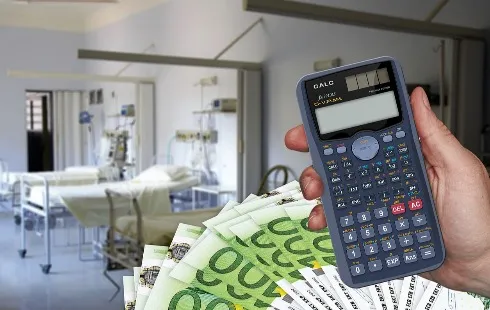Global Markets React to U.S. Government Shutdown Amid Economic Concerns
Global stock markets displayed mixed results as the U.S. government shutdown commenced on Wednesday, causing uncertainty among investors. U.S. futures for the S&P 500 and Dow Jones Industrial Average fell by 0.6% each, following a record-setting day where the S&P 500 had risen by 0.4% and the Dow by 0.2%. The Nasdaq composite also saw a slight increase of 0.3%, reaching 22,660.01.
In early European trading, Germany's DAX index experienced a decline of 0.2%, settling at 23,916.90, while the CAC 40 in Paris also dropped 0.2% to 7,907.99. Conversely, Britain's FTSE 100 index gained 0.7%, climbing to 9,416.30.
Asian markets reflected similar volatility; Japan's Nikkei 225 index fell by 0.9% to 44,550.85 after a report from the Bank of Japan indicated a slight improvement in business sentiment among major manufacturers. This report raised expectations that the central bank might consider increasing interest rates to address persistent inflation above the target range of 2%. Meanwhile, Japan's political landscape remains uncertain as the ruling Liberal Democratic Party is expected to elect a new leader to replace Prime Minister Shigeru Ishiba later this week.
In mainland China, markets are closed for the National Day holiday until October 8, but the central bank has announced plans for a substantial 1.1 trillion yuan (approximately $160 billion) reverse repo operation on October 9 to boost liquidity and encourage consumer spending and business investment.
In other parts of Asia, South Korea's Kospi index rose by 0.9% to 3,455.83, while Taiwan's Taiex index increased by 0.6%, driven by strong demand for semiconductor stocks. Australia's S&P/ASX 200 index experienced a marginal decline of less than 0.1%, dropping to 8,845.70. In India, the Sensex index gained 0.8% as investors appeared to be largely unfazed by the U.S. government shutdown.
Historically, past government shutdowns in the U.S. have had limited impacts on the economy and stock market, leading many investors to anticipate a similar outcome this time. However, the current shutdown may pose unique challenges, particularly with the White House potentially advocating for significant federal workforce reductions.
The stock market has been on a consistent upward trajectory since reaching a low in April, driven by investor optimism regarding the Federal Reserve's rate cuts and the impact of President Donald Trump's trade policies. Recent economic reports, however, have presented a mixed picture: a Conference Board survey indicated that consumer confidence has waned, with many respondents citing concerns over the job market and persistent inflation.
Moreover, the job market appears to remain stagnant, with U.S. employers reporting similar levels of job openings at the end of August compared to the previous month. Wall Street had hoped for a balance in these numbers to maintain the Fed's trajectory of interest rate reductions. The Fed recently implemented its first rate cut of the year, with expectations for more cuts to stimulate job growth.
The government shutdown raises questions about the timeliness of upcoming economic reports, including crucial job creation data scheduled for release on Friday. The Department of Labor has indicated that its Bureau of Labor Statistics operations will halt during the shutdown, which could delay the release of significant employment figures.
In the commodities market, oil prices fell slightly early Wednesday, with U.S. benchmark crude dropping 21 cents to $62.16 per barrel and Brent crude losing 22 cents to $65.80 per barrel. The U.S. dollar also weakened against the Japanese yen, falling from 147.94 to 147.13, while the euro strengthened against the dollar, rising from $1.1734 to $1.1752.













No comments yet. Be the first to comment!